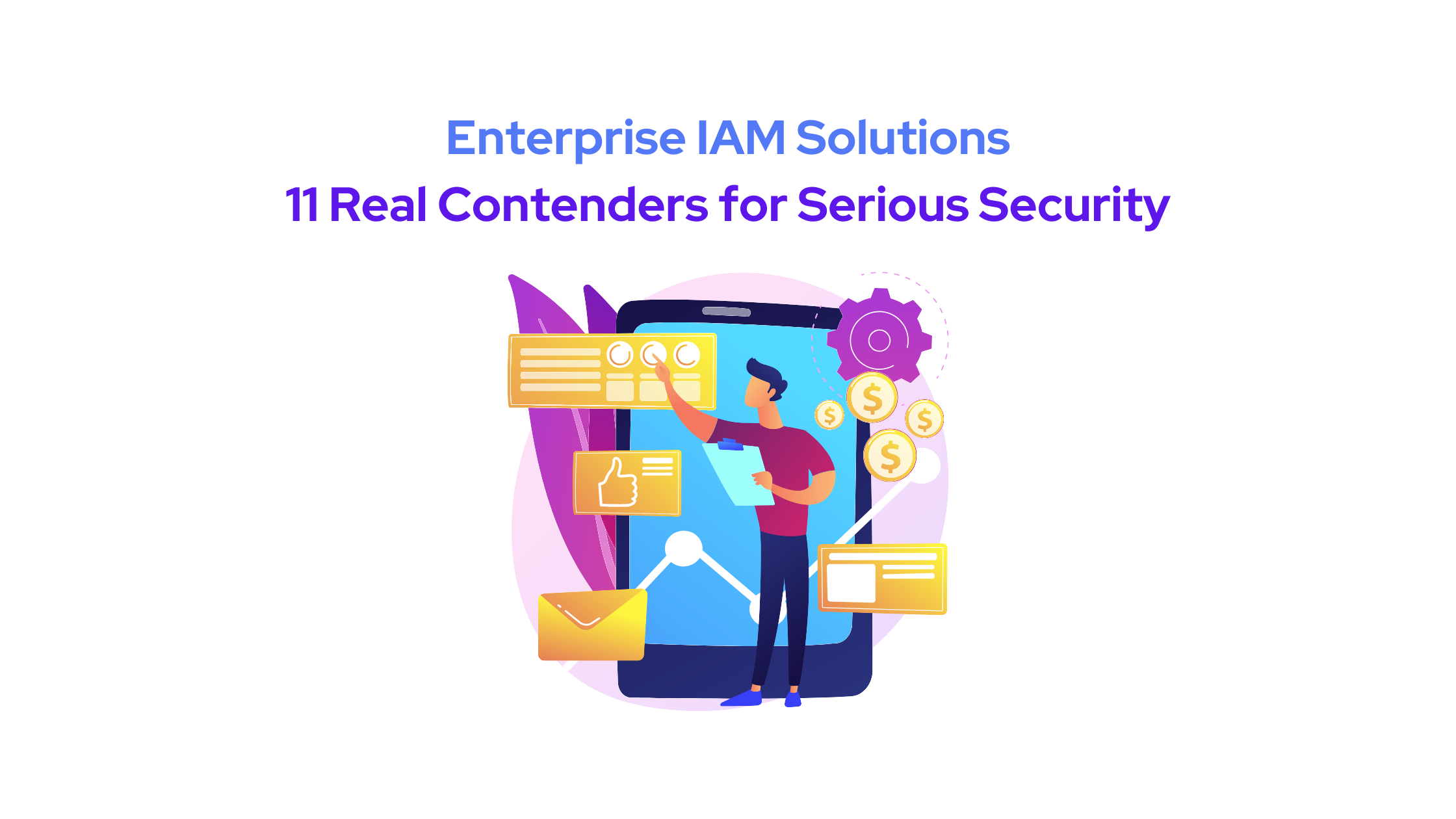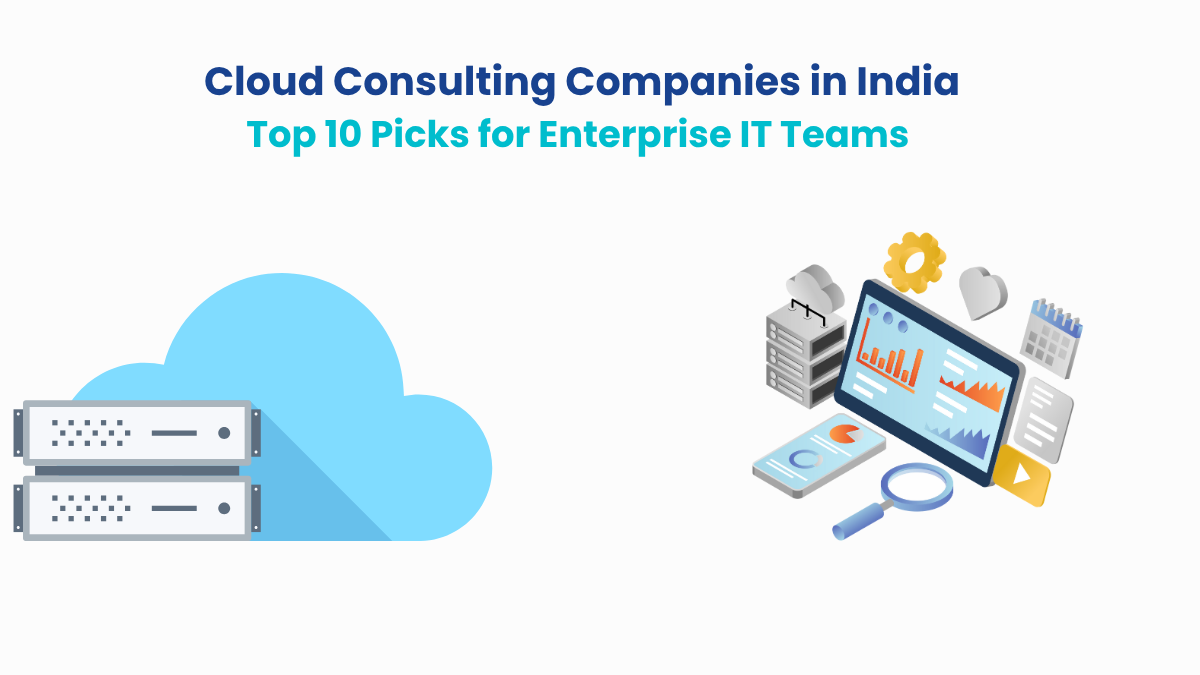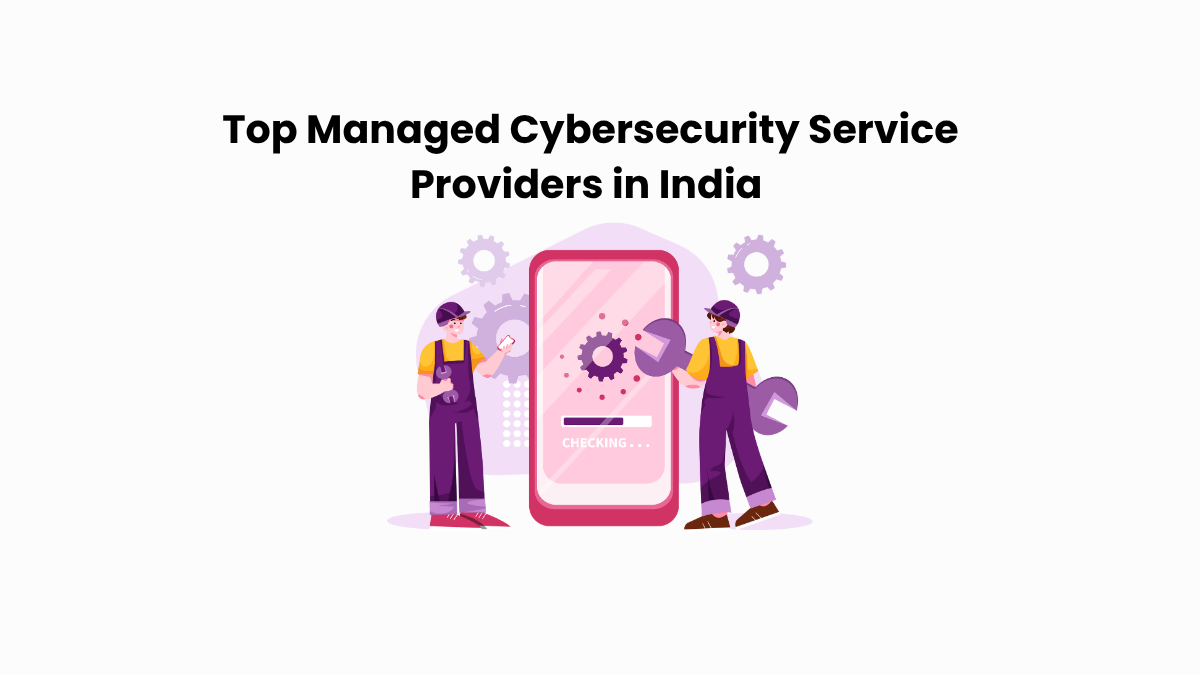Choosing the right enterprise iam solutions is more than a security decision. It is a strategic move that shapes how your business operates, protects data, and stays compliant.
According to IBM’s 2024 Cost of a Data Breach Report, breaches involving compromised credentials now account for 16 percent of all attacks, with an average cost of $4.81 million per breach.
But here’s what most security leaders won’t admit: The biggest risk isn’t choosing the wrong tool. It is choosing the right one for the wrong environment.
Many platforms look strong in vendor demos but fall short when real-world complexity kicks in — legacy systems, hybrid cloud, shadow IT, and regulatory requirements. The gap between “features” and “fit” is where identity and access management fails.
This guide is written for those who cannot afford that gap. Inside, you will find:
- A breakdown of 11 leading enterprise identity and access management solutions.
- What each platform actually does best.
- Where each one fits based on real enterprise use cases.
- And how Datacipher helps you integrate, govern, and scale the right solution for your business.
If identity is the new perimeter, this is your blueprint to secure it. Let’s dive in.
What Makes a Solution ‘Enterprise-Grade’ in Identity and Access Management?
Enterprise IAM solutions are not just built for scale. They are built for messy realities — hybrid environments, cross-border teams, regulatory demands, and legacy infrastructure.
Here’s what separates true enterprise-grade platforms from the rest:
#1. Scalability at the Identity Core: The platform must support tens of thousands of users, distributed teams, multiple identity types (employees, contractors, partners), and dynamic provisioning, without performance dips.
#2. Fine-Grained Access Control with Policy Intelligence: Enterprises need more than roles. They need attribute-based and risk-based access logic, real-time enforcement, and policy versioning that aligns with business rules and compliance models.
#3. End-to-End Lifecycle Management: The platform should handle every identity event, from automated provisioning on day one to immediate revocation on exit — across cloud, SaaS, and on-prem systems.
#4. Deep Integration with HR and Directory Infrastructure: It must sync cleanly with Active Directory, Azure AD, Okta Universal Directory, Workday, SAP SuccessFactors, and other identity sources without brittle connectors or sync delays.
#5. Hybrid and Legacy System Compatibility: Enterprises rarely have clean environments. The solution must bridge cloud-native apps and legacy systems, support federation, and adapt to multi-generational IT stacks.
#6. Continuous Audit and Governance Capabilities: Every access change, review, and policy override must be logged, reportable, and audit-ready; not just for security teams, but for regulators and legal stakeholders.
When these capabilities work together, the result isn’t just access. It’s visibility, control, and resilience at scale.
Recommended Read: Looking to strengthen your security posture across cloud, SaaS, and legacy systems?
Discover the top ways enterprise security teams are managing expanding digital footprints and unknown assets with our free eBook on Attack Surface Management — featuring 10 real-world use cases, from zero-day response to ransomware prevention.
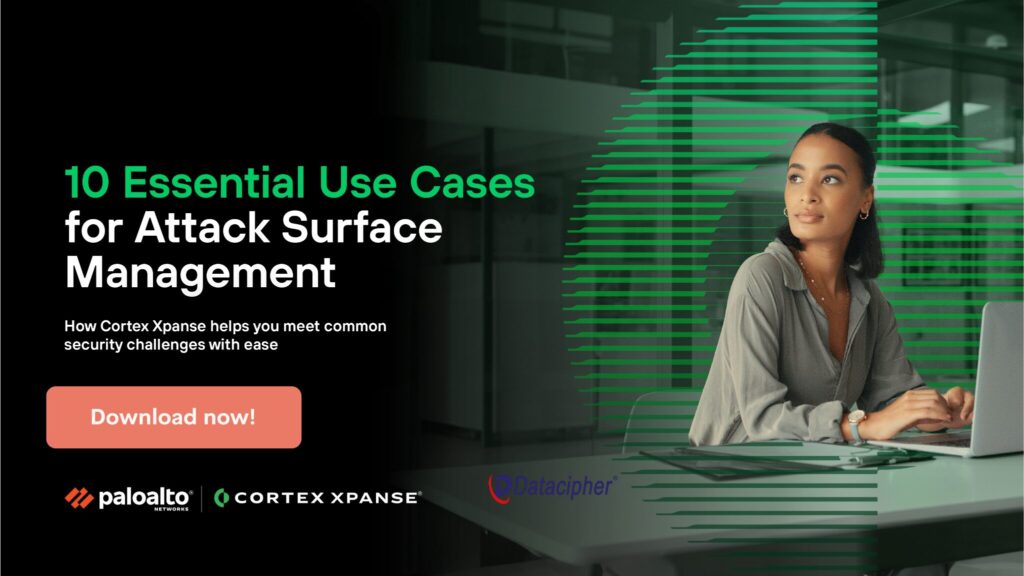
Comparing the Top 11 Enterprise IAM Solutions
The identity and access management market is full of promises. Every platform claims to be scalable, secure, and enterprise-ready. But when you get into actual implementation, the differences become clear in flexibility, integration complexity, policy enforcement, and ongoing governance.
This section breaks down 11 leading enterprise IAM solutions. These are not just the biggest names. They are platforms trusted by large organizations to secure complex environments, meet regulatory demands, and scale across hybrid infrastructure.
We are not picking winners. Each tool has its strengths. The real question is which one fits your business architecture, compliance profile, and future growth plan.
Let’s look at them, one by one.
#1. Okta
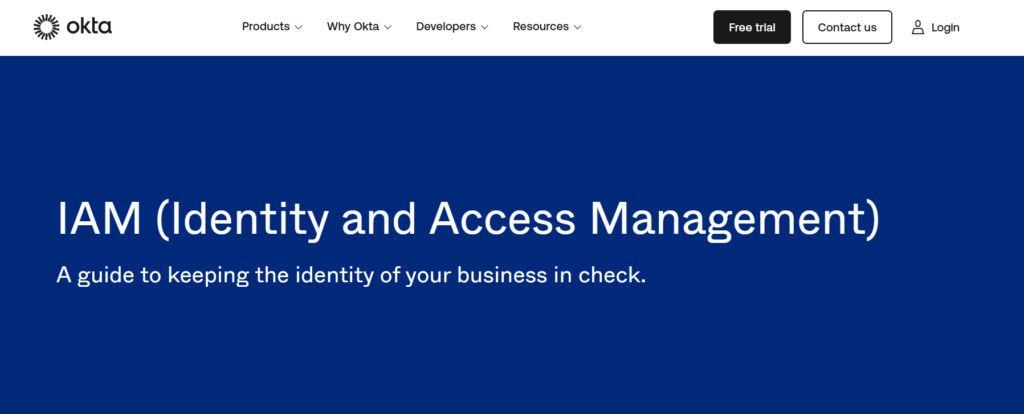
Source – Okta
Okta is a cloud-native enterprise IAM solution built for speed and scale. Its greatest strength lies in ease of deployment and breadth of integrations, offering over 7,000 pre-built connectors for SaaS and cloud applications.
What sets it apart is its ability to deliver secure access with minimal configuration, making it ideal for enterprises prioritizing usability over customization.
Okta works best in cloud-first environments with a distributed workforce and a focus on rapid identity lifecycle automation. It is not suited for legacy-heavy stacks or deep on-prem dependencies. Positioned as a Leader in Gartner’s 2024 Magic Quadrant for Access Management, Okta is often chosen for workforce IAM, zero trust implementations, and rapid SaaS enablement.
#2. Microsoft Entra ID (formerly Azure Active Directory)

Source – Microsoft Entra ID
Microsoft Entra ID is the default identity and access management solution for enterprises running Microsoft 365, Azure, and hybrid infrastructure. Its strength lies in deep native integration with Microsoft services, enabling seamless authentication, conditional access, and identity governance across cloud and on-prem environments.
What differentiates Entra ID is its support for hybrid identity models. It bridges Active Directory and cloud-based identities with minimal friction. It’s best suited for organizations heavily invested in the Microsoft ecosystem that need to enforce strong access policies while maintaining user productivity.
Common use cases include workforce IAM, compliance-driven environments, and hybrid IT stacks. Microsoft Entra ID has been recognized as a Leader in Gartner’s 2024 Magic Quadrant for Access Management for 7 years in a row.
#3. Ping Identity

Source – Ping Identity
A consistent leader in Gartner’s Magic Quadrant for Access Management for eight years, Ping Identity is built for enterprises that need deep customization, strong federation, and secure hybrid deployments. Its core strength lies in flexible policy control and adaptive authentication, with support for open standards like SAML, OAuth, and OIDC.
Unlike plug-and-play solutions, Ping is designed for environments with complex identity needs — often chosen by financial institutions, healthcare systems, and global enterprises. It supports workforce and customer identity use cases, offering high levels of interoperability across legacy and modern systems. Ping Identity excels when identity must scale across cloud, on-prem, and partner ecosystems without compromising control.
#4. IBM Verify

Source – IBM Verify
IBM Verify has consistently ranked among the top access management platforms in Gartner’s Magic Quadrant, with repeat recognition in 2023 and 2024 for its enterprise-scale identity capabilities. Built for large organizations, it offers adaptive access, AI-driven identity analytics, and granular governance.
Its strength lies in delivering deep policy control and risk-based decision-making across hybrid environments. Unlike lighter IAM platforms, Verify is purpose-built for enterprises with compliance-heavy mandates, legacy system dependencies, and the need for fine-tuned auditing.
It supports open standards, integrates with a wide range of systems, and offers both SaaS and on-premises deployments. It’s a strong fit for organizations seeking identity intelligence and long-term governance maturity.
#5. SailPoint
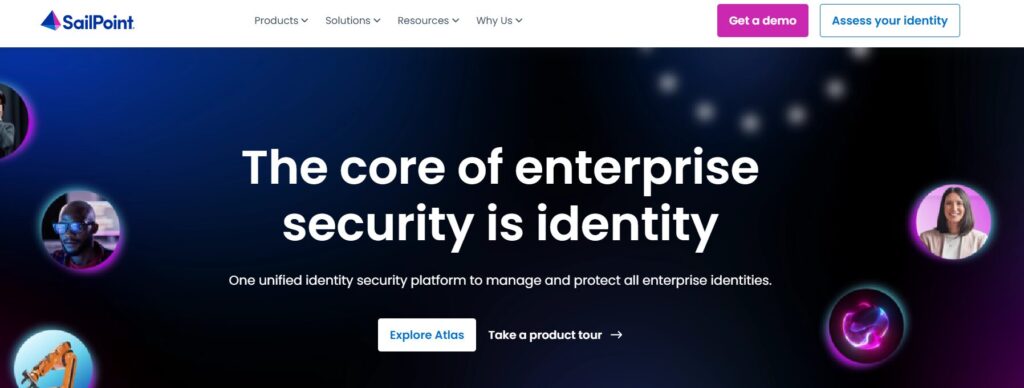
Source – SailPoint
SailPoint is a leader in identity governance, built for enterprises that need to manage access risk across users, apps, and data. It focuses on enforcing least privilege, automating access certifications, and improving visibility into who has access to what and why.
With AI-powered access modeling and policy suggestions, SailPoint helps security teams simplify complex identity decisions. It integrates with cloud and on-prem systems, supports role-based access control, and enables organizations to meet regulatory demands with confidence.
SailPoint is often chosen by companies in finance, healthcare, and other high-compliance industries for its depth in governance and risk-driven access management.
#6. CyberArk
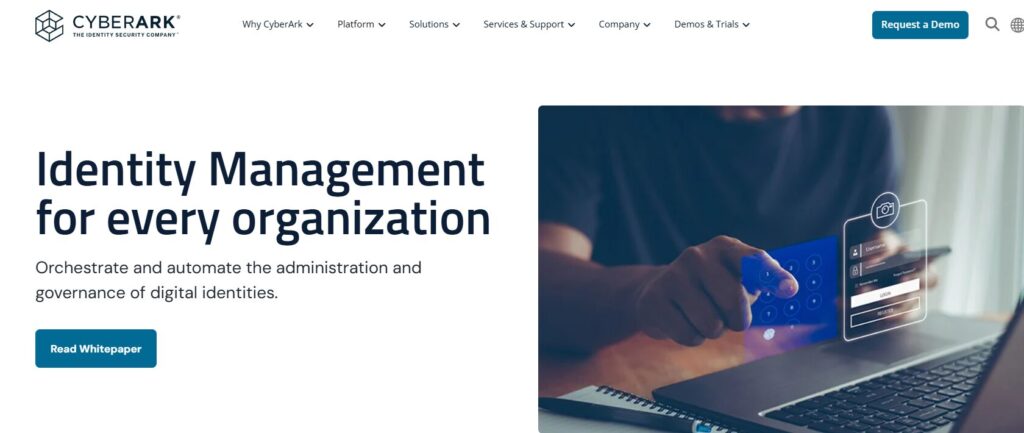
Source – CyberArk
CyberArk has been a recognized leader in privileged access management and continues to gain ground in broader identity and access management through its Identity Security Platform.
Featured prominently in Gartner’s 2024 Magic Quadrant for Access Management, CyberArk stands out for its ability to unify workforce IAM with privileged access controls — a critical need for security-first enterprises. Its core strength lies in safeguarding high-risk accounts, enforcing least-privilege access, and monitoring sessions in real time.
CyberArk is best suited for organizations where insider threats, regulatory pressure, or admin-level access risks are top priorities. With support for both cloud and hybrid deployments, it serves industries such as finance, defense, and energy that require hardened access controls.
#7. OneLogin

Source – OneLogin
OneLogin, now part of One Identity, has been consistently recognized in industry evaluations for its simple, cloud-based approach to identity and access management.
Its core strength lies in rapid deployment, clean user interface, and essential features like Single Sign-On, Multi-Factor Authentication, and user provisioning. OneLogin differentiates itself by balancing usability and control, making it a strong fit for mid-market and fast-growing enterprises that need secure access without heavy configuration.
It supports cloud-first environments and hybrid IT through integrations with Active Directory and popular SaaS platforms. While not as customizable as some enterprise-scale solutions, it excels at getting organizations operational quickly. Common use cases include workforce IAM and secure SaaS adoption.
#8. JumpCloud

Source – JumpCloud
JumpCloud has emerged as a strong player in the cloud directory and identity space, offering a unified platform that blends workforce IAM with device and endpoint management.
Its key strength lies in enabling secure access across users, systems, and networks, without the need for traditional on-premises Active Directory.
JumpCloud is especially useful for organizations with remote or hybrid teams, offering SSO, MFA, conditional access, and full cross-platform device visibility. It is best suited for mid-sized enterprises and growing companies looking to simplify identity without stitching together multiple tools. The platform supports Windows, macOS, and Linux endpoints, and aligns well with zero trust models.
#9. Saviynt

Source – Saviynt
Saviynt has been recognized in the 2024 Gartner® Market Guide for Identity Governance and Administration (IGA) as a Representative Vendor, highlighting its comprehensive approach to identity management.
Its Identity Cloud platform integrates identity governance, application access, cloud security, and privileged access management into a unified solution. This convergence enables organizations to enforce security policies, manage user lifecycles, and ensure compliance across diverse IT environments.
Saviynt is particularly well-suited for enterprises operating in complex, hybrid, or multi-cloud infrastructures that require robust identity controls and seamless integration with various applications and services. Its cloud-native architecture supports scalability and flexibility, catering to dynamic business needs.
#10. WSO2 Identity Server

Source – WSO2
WSO2 Identity Server is a highly extensible, open-source identity and access management platform built for enterprises that need protocol-level control and deep customization.
Its strength lies in enabling secure Single Sign-On, identity federation, API protection, and adaptive authentication across complex, distributed environments. The platform supports SAML, OAuth2, OpenID Connect, and SCIM, making it well-suited for organizations building custom identity workflows or integrating into microservices architectures.
WSO2 is best used by enterprises with strong internal engineering teams — such as government bodies, research institutions, and technology firms — that require a vendor-neutral IAM solution with full deployment control. It supports both cloud and on-premises models and aligns well with modern DevSecOps practices.
#11. One Identity

Source – One Identity
One Identity delivers a unified platform that combines identity governance, access management, privileged access, and Active Directory management — making it one of the few vendors offering true end-to-end IAM capabilities.
Its strength lies in consolidating disparate identity functions into a single architecture, reducing complexity and improving visibility. One Identity is best suited for enterprises seeking to enforce consistent policies across cloud, on-premises, and hybrid environments without managing multiple vendors.
The platform supports both workforce and privileged identity use cases, and integrates with Microsoft ecosystems, SAP, and leading SaaS apps. In 2024, it was recognized in analyst evaluations for its completeness of vision and strong integration.
Enterprise IAM Solutions Comparison Table
| Tool | Deployment Fit | Best For | IAM Focus Area | Differentiator | Primary Industry Fit |
| Okta | Cloud-native | SaaS-heavy, fast-scaling enterprises | Workforce identity and access management | 7,000+ pre-built integrations and rapid time-to-value | Tech, Retail, Education |
| Microsoft Entra ID | Hybrid and cloud | Microsoft-centric organizations | Workforce identity and access management | Deep M365 and Azure AD integration | Enterprises using Microsoft stack |
| Ping Identity | Cloud and hybrid | Regulated industries and complex federated environments | Workforce and customer identity management | Strong federation, open standards, policy control | Financial services, Healthcare |
| IBM Security Verify | Cloud and on-prem | Enterprises with compliance and policy orchestration needs | Workforce identity and access management | AI-driven adaptive access and identity analytics | Government, Finance, Healthcare |
| CyberArk | Cloud and on-prem | Organizations prioritizing privileged access controls | Workforce identity and privileged access management | Combines IAM with PAM in a single platform | Finance, Defense, Energy |
| SailPoint | SaaS | Heavily regulated industries needing access governance | Identity governance and administration (IGA) | Automated certifications and AI-driven access reviews | Finance, Healthcare, Pharma |
| OneLogin | Cloud-native | Mid-sized, fast-scaling enterprises | Workforce identity and access management | Quick deployment with simplified administration | SaaS, Tech, Education |
| JumpCloud | Cloud-native | Remote-first teams and device-centric organizations | Workforce IAM and device security | Unified directory and cross-platform endpoint management | IT, Startups, Distributed Workforces |
| Saviynt | Cloud-native | Enterprises requiring identity governance plus cloud security | IGA, Access Management, Privileged Access | Converged platform for governance, entitlement and PAM | Multi-cloud Enterprises, Healthcare |
| WSO2 Identity Server | Cloud and on-prem | Engineering-led organizations needing customization | Workforce and customer IAM, API security | Open-source with protocol-level control | Government, Academia, DevOps Teams |
| One Identity | Cloud, hybrid, on-prem | Enterprises seeking unified governance and privileged access | Identity governance, access management, PAM | Full-stack IAM suite with AD management and PAM integration | Finance, Manufacturing, Utilities |
You’ve Chosen the Right IAM Solution. Now Choose the Right Partner to Implement It.
By now, you’ve seen how varied and powerful enterprise IAM solutions can be. But the truth is even the best platforms can fail without the right implementation. That’s where most organizations struggle. Not with choosing the tool, but with making it work inside their unique environment.
This is exactly why leading enterprises trust Datacipher.

Source – Datacipher
We recently worked with a large healthcare provider to deploy CyberArk for privileged access management. Their teams struggled with admin account sprawl across on-prem systems and cloud apps. Datacipher implemented session monitoring, least privilege controls, and automated access reviews. The result was stronger audit readiness and a 40% reduction in privilege misuse incidents within months.
As a certified system integrator with deep domain expertise, Datacipher helps businesses implement identity and access management solutions that don’t just check boxes — they actually work.
Whether you’re deploying in a cloud-native, hybrid, or legacy-heavy setup, Datacipher aligns your IAM platform with your architecture, your compliance landscape, and your business priorities.
From initial solution design to secure provisioning, policy orchestration, governance integration, and 24/7 monitoring, Datacipher covers the entire IAM lifecycle. Our work spans industries like telecom, finance, government, and critical infrastructure, and we have earned global recognition as a Juniper Networks Elite Plus Partner and a trusted cybersecurity advisor.
In short, Datacipher doesn’t just help you launch an IAM solution. We help you make it last. Want help in implementing enterprise IAM solutions at your organization? Consult our experts to get started.
Frequently Asked Questions on Enterprise IAM Solutions
#1. Do enterprise IAM solutions support both cloud and on-premise systems?
Yes. Most enterprise IAM solutions now support hybrid environments enabling centralized identity governance across cloud apps, on-prem systems, and legacy infrastructure. Tools like Microsoft Entra ID, Ping Identity, and ForgeRock are designed to handle both environments without compromising control or compliance.
#2. What’s the difference between identity management and access management?
Identity management handles who the user is, their roles, and lifecycle. Access management governs what that user can do, including authentication, authorization, and session control. Enterprise IAM solutions integrate both to ensure users get the right access, for the right reason, at the right time.
#3. How long does it typically take to implement an enterprise IAM solution?
It depends on complexity. A cloud-native IAM tool can be implemented in weeks, while hybrid or governance-heavy environments may take several months. A system integrator like Datacipher accelerates rollout by aligning technical deployment with business requirements from day one.
#4. Can I use more than one IAM solution across different departments or regions?
Yes, but with caution. Some enterprises deploy different IAM tools for specific functions, like one for workforce access and another for privileged users. However, managing multiple IAM stacks increases integration and governance complexity. It’s best handled with expert oversight to avoid security gaps.
#5. What are the risks of poor IAM implementation?
Failed IAM deployments often lead to overprovisioned access, audit failures, and security blind spots. Poor integration can also result in user friction, access delays, and increased helpdesk costs. Worse, misconfigured IAM systems can become the very entry point attackers exploit.
#6. Is it possible to migrate from one IAM platform to another?
Yes, but it requires careful planning. IAM migration involves mapping identities, preserving policies, and ensuring secure cutover with minimal disruption. A phased approach, guided by a partner like Datacipher, helps enterprises de-risk the process and avoid business downtime.

